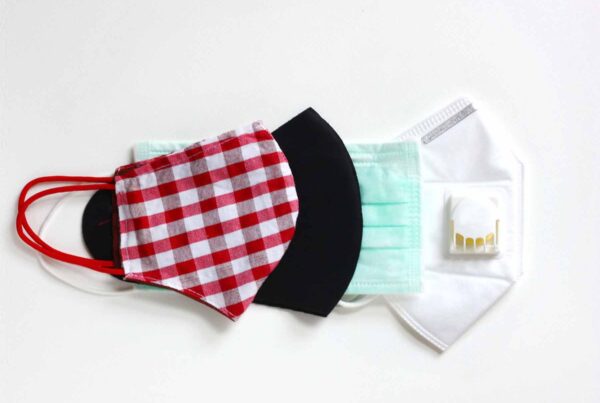By Unnati Gupta
The Big Picture
An update on the numbers: the United States has passed 7 million confirmed COVID-19 cases and reported over 200,000 deaths. Southern states, led by Louisiana, Florida, and Mississippi have the highest case rates (infections per 100,000 people). In an interview with Newsweek, Get Us PPE founder Dr. Megan Ranney attributed these high numbers to a broken healthcare system, stating, “Many people can’t afford basic care. Our public health system has been underfunded for years. And our pandemic preparedness system over the past few years in the U.S. On top of these underlying issues, we faced a unique lack of widespread testing, a lack of clear public health messaging, and nationwide shortages of personal protective equipment like gloves, masks, and hospital gowns.”
Fixing the Strategic National Stockpile
While trends have varied throughout the months, one fact still remains: PPE shortages are prevalent and widespread. When talking to Newsweek, Dr. Ranney brought to light these constant PPE shortages, stating that Get Us PPE “has received requests for millions of pieces of donated PPE, coming from all U.S. states and some territories. Unfortunately, in August, 77% of facilities that requested PPE from us had no supply remaining of at least one type of PPE.” While supplies like ventilators are no longer experiencing a shortage, test-kits and masks remain in high demands. A variety of supply-chain deficiencies are contributing to the lack of improvements regarding PPE shortages.
At the center of these deficiencies is the depleted Strategic National Stockpile (SNS). This problem has been attributed to the SNS’s lack of information, low profile, and shortage of expertise. With outdated inventory management systems, the SNS has no effective way to monitor and analyze current stockpile data. Therefore, with no ability to pull information from previous pandemics, terrorist events, and other crises, there is no ability to “produce quick and efficient decisions in a crisis.”
Further, the SNS’s voice has been effectively muffled due to their lack of visibility. Seen as an afterthought and low priority in the eyes of big governmental agencies, the SNS has long been neglected, its work has been delegated to small teams, and its funding has repeatedly been cut. All these factors prevent the SNS from coordinating activities with federal systems and establishing a credible voice on the national stage. Within the small teams running the SNS, a lack of expertise has created a series of uneducated decisions regarding supply-chain management, resource distribution, and more. While the magnitude of these shortcomings can be evident, experts claim that the problems are easily fixable and simple solutions can result in improvements in PPE availability.
Do KN95 Masks Work?
The lack of available and affordable N95 masks has led many healthcare workers to seek out KN95 masks. These filtering respirators are similar in design to N95s but not officially approved for health care use in America. But do KN95 masks work? Troublingly, a recent report states that 70% of KN95 masks do not pass the U.S. filtration standards. With a design using ear loops instead of wrap-around straps, many experts say that the mask does not fit snugly against an individual’s face. After further testing, they determined that around 60-70% of the tested masks do not filter 95% of aerosol particles. However, using KN95 masks used in situations that don’t involve bodily fluids is still safer than using many cloth and surgical masks.
Safety Net Hospitals Brace for Second Wave
A second wave of the coronavirus pandemic could be catastrophic to safety net hospitals: nonprofit hospitals that provide equal-access care for all patients, regardless of income level. These hospitals treat the majority of a community’s uninsured patients, a historically Black and Hispanic population. Often financially unstable during normal times, many of these hospitals have been overwhelmed during the first wave of this pandemic. With little help from federal aid, the cost of PPE supplies contributed to the overall $300 billion these hospitals will be losing. Many health experts anticipate this second wave will force hospitals treating lower-income patients to shut down or limit services. So far, many have been attempting to store scarce PPE supplies such as N95 masks in an effort to prepare for a surge of cases that could potentially be catastrophic.
This Week at Get Us PPE: Ali Raja, Alizée Weber, Megan Ranney
Dr. Ali Raja, a co-founder of Get Us PPE spoke with Forbes to explain why 1 in 10 COVID-19 patients are reportedly coming back to the hospital after being discharged. He said that, “vital signs change over time, so it’s not surprising to find that patients with borderline or abnormal vital signs have a higher risk of coming back to the ED, since their bodies may already be having problems compensating for the coronavirus infection.” This return rate in patients is concerning to many health experts, as it is two times the rate of any other illness. Many see this as yet another indicator of the unpredictable nature of the coronavirus.
Alizée Weber, Deputy Director of Operations at Get Us PPE spoke with Supply Chain Dive to explain the trends and changes in PPE requests and deliveries. She explains that by opening up donation requests to a wider range of facilities, hospitals now only account for 10% of total requests, compared to 47% in April. Weber says that Get Us PPE has only been able to fulfill 10% of requests, “an indication of how severe the crisis is.” Further, the Get Us PPE August Shortage Index was highlighted. The index shows that supply chains are not able to keep up with demand, “with 77% of respondents saying they have no supply remaining for one of more types of PPE.”
Dr. Megan Ranney, co-founder of Get Us PPE, talks with PBS News Hour to discuss the steps the United States could have taken to prevent losing 200,000 lives to COVID-19. She explains that, “had we had early activation of the Defense Production Act to both get us testing supplies and to get us personal protective equipment and, most importantly, had we had consistent, clear public health messaging for the American public about what to do to prevent the spread of COVID-19,” the outcome may have been different. She points out that this grim milestone of 200,000 lives lost points to the “failure of national leadership and a national strategy.”




